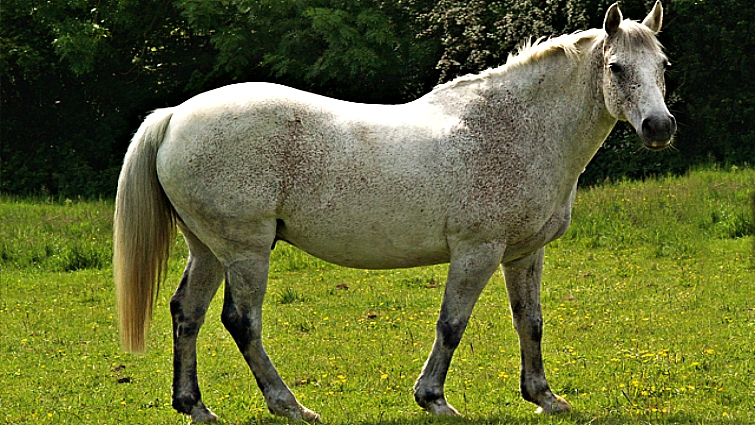Due to the recent weather we have experienced, the grass is in abundance, but this isn’t always a good thing for some horses and ponies. With rates of obesity thought to be as high as 70% in some populations of ponies, it’s invariably weight loss rather than weight gain that’s needed to keep most of our horses healthy and this means cutting back on the availability of grass to them. “Recent studies suggest that weight gain more than doubles the risk of horses and ponies developing laminitis,” says Clare Barfoot RNutr, the research and development manager at Spillers. “Excess weight can also have other negative consequences from increasing the risk of insulin dysfunction to poor performance. So it’s crucial, from many aspects, not to let our horses get fat.”

Here, Clare provides some practical tips to help take control of your horse’s weight:
1.Use winter wisely every year and allow your horse to lose weight naturally. Being able to see your horse’s ribs is healthy as you enter spring and will give some scope for natural weight gain when the grass starts to grow.
2.Provide nutritional support to ensure your horse has a balanced diet. The latest research recommends that a low calorie, protein, vitamin and mineral balancer should always be included in the diet of horses on restricted forage.

3.Assess fecal output daily to check for changes in pasture intake when you have restricted the grazing. The latest research suggests you need to see a decrease of around half to result in weight loss if the horse previously had unrestricted access to pasture.
4.Don’t use rugs because very few horses actually need them in summer even if it’s raining! Instead allow your horse to naturally shake off a few pounds by keeping warm, as nature intended.
5.Feed alternative forage to horses and ponies at a very high risk of laminitis. Ideally, remove them from pasture altogether and feed a suitable forage/short chopped fiber, preferably one that has been approved by the Laminitis Trust.

6.Invest in forage analysis to make sure you know the nutrient and WSC content of the hay or haylage you plan to use for your weight loss program.
7.Weigh forage before feeding having first discussed with your vet the appropriate percentage bodyweight ration your horse needs to promote weight loss (if soaking start with 20% more dry weight as some dry matter will be lost post soaking).
8.Increase exercise to a minimum of 25 minutes (15 minutes at a brisk trot) five times a week to help keep your horse’s waistline in check and support a healthy metabolism.

